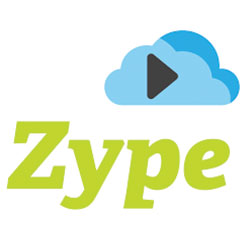 We all know silos in business are bad.
We all know silos in business are bad.
Disconnected teams, data that is never shared, and increasingly complex technology stacks lead to bad performance. It doesn’t matter what industry you’re in, in today’s fast-paced business environment you can’t keep pace with deep operational inefficiencies.
For those of us in the streaming video industry, having a siloed group of teams, tools and processes leads to poor customer engagement and falling behind the competition. New OTT, social media channels, shifting viewer behaviors and direct-to-consumer approaches demand agility. And, beyond video distribution, connecting business functions to video operations is imperative. The keys to success — speed, quality, customer engagement, precision targeting and actionable analytics — can’t happen in a siloed environment.
To empower teams and performance, the VidOps framework helps unify cross-functional teams, and the tools and processes they use.
VidOps helps businesses combat silos by connecting sales, finance, engineering, marketing and video operations teams to deliver high-quality video, while growing new audience and satisfying existing customers. It says “goodbye” to the frustration teams feel when every project is a struggle and delays become the norm.
Read More: VidOps Framework Connects Video Teams, Tools and Processes
VidOps Defined
VidOps is a framework to unify video developers, technical assets, business stakeholders and content operations work into a single workflow. It aims to empower cross-functional business, creative and video operations teams to effectively deliver business value from premium video content through integrated processes, teams and tools. VidOps promotes collaboration, visibility and shared-goals to drive the expansion of owner-controlled video content — and the value it delivers — across all delivery platforms and audiences, and to drive engagement and ROI with speed and quality.
What are the Core Principles of VidOps?
- VidOps is a philosophy and practice to bring video creation, distribution, management and monetization teams under one umbrella, to meet business objectives through collaboration and shared responsibilities.
- VidOps must help cross-functional teams set clear objectives and work collectively to create a high performing, value-driven and efficient video lifecycle environment.
- VidOps is a strategic initiative to transform the streaming video lifecycle by unifying all teams, tools and processes into a single business process.
What do Emerging VidOps Teams Want?
- A shared vision that guides strategy and de-emphasizes isolated tactics.
- A structure for cross-functional teams to share ideas, success measures and goals.
- Shared data that is useful across teams to accomplish stated goals.
- Open systems and workflows that promote collaboration and understanding, and provide actionable data in real time.
Read More: Widen Unveils Video Portals to Simplify Video Marketing and Audience Engagement
VidOps Value Stream
We noticed the successes of other industries that are focused on cross-functional teams, self-organizing, and continuous improvement. Dovetailing with Lean approaches for manufacturing, and more recently DevOps for software delivery, VidOps extends the streaming video paradigm, and aligns all those responsible, to core business values. It aims to elevate the entire video lifecycle, and how organizations think about it, to a higher-level strategic initiative. It is the inspiration and proven value from these movements that led to the development of VidOps to break down the silos, manage complexities and align goals. VidOps also offers a vision for the industry that all video businesses can get behind.
Industry Vision for Video Management and Distribution
- Connect Teams & Workflows: The silos between business and video operations must be removed and shared collaboration promoted.
- Open Integration: Tools, platforms, systems and data must flow freely through connected frameworks that streamline the entire video lifecycle.
- Beyond Distribution: Video operations teams must expand traditional “distribution” capabilities to embrace customer-and business-facing technologies and processes.
- Business Driven: Quality video isn’t enough anymore, and the mindset of video professionals and associated teams need to be aligned and focused on shared business goals and objectives.
- Better Quality, Faster: Video-driven organizations must deliver “TV quality” video when and where customers want it — fast.
- Results Oriented: Business stakeholders must have access to high-quality quantitative data to make good decisions regarding content investments.




Comments are closed.